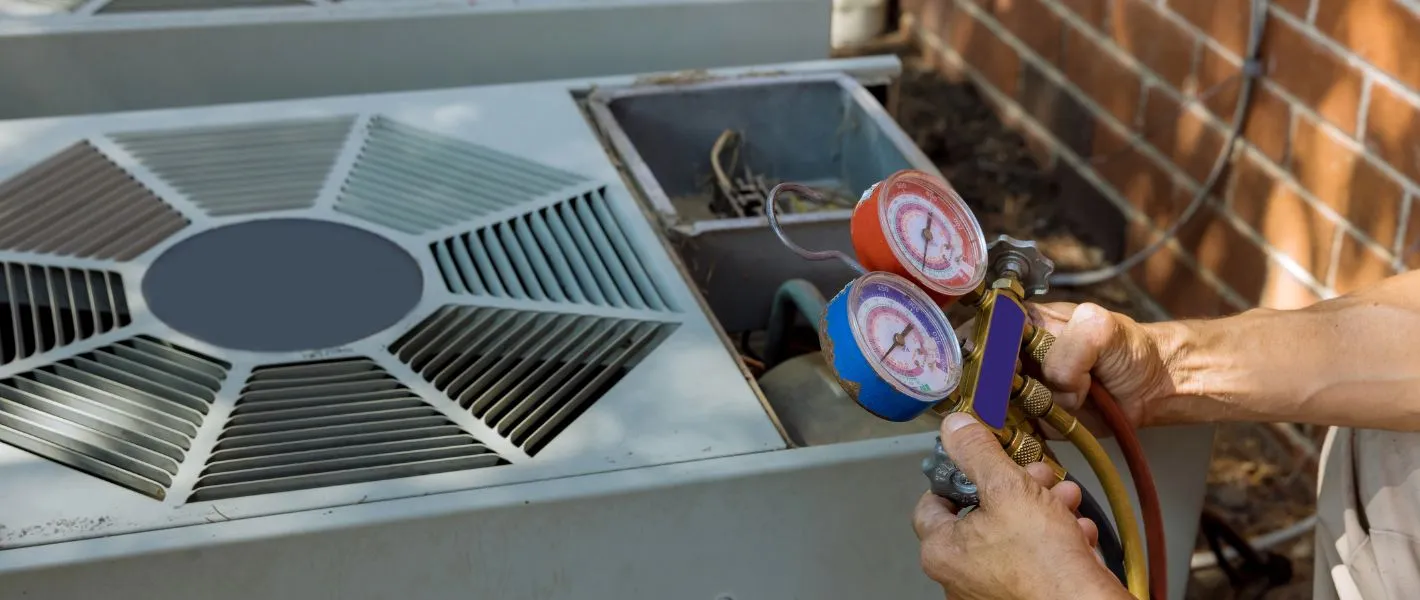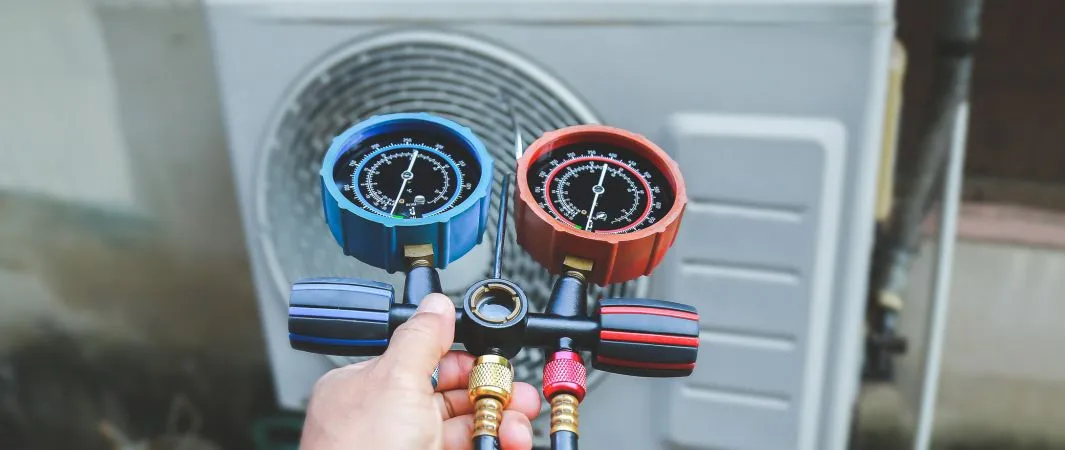Blog
Air conditioning vacuuming: the importance of vacuuming refrigeration circuits and vacuum equipment

Vacuuming refrigeration circuits is a key step in the installation, maintenance and repair of refrigeration and air conditioning systems. This process is essential to ensure the proper function and efficiency of these systems, which utilize refrigerant circulation between the compressor, condenser and evaporator. The purpose of vacuuming is to remove air, moisture and debris from the circuit that could reduce performance or lead to damage. In addition to a theoretical explanation of vacuuming, this article will also focus on the vacuum equipment that is key to the process.
1. Removal of air and moisture
The primary purpose of vacuuming refrigeration circuits is to remove air and moisture that may enter the system during installation or repair. Air in the refrigeration circuit causes an increase in pressure, which reduces system efficiency and increases energy consumption. In addition, the higher pressure causes the compressor to work harder, leading to faster wear and tear.
Moisture poses an even more serious problem. If moisture enters the refrigeration circuit, it can condense and freeze in low-temperature parts of the system, such as evaporators. This will cause a blockage in refrigerant flow, leading to reduced system efficiency or complete system failure. In addition, moisture can react with the refrigerant to form acids that cause corrosion of components. Therefore, vacuuming is essential to remove all moisture from the circuit to avoid these complications.
2. Ensuring optimum system efficiency
A properly balanced cooling system achieves maximum efficiency because it is free of air and moisture that would otherwise cause pressure and temperature increases. This ensures efficient heat exchange between the refrigerant and the surrounding environment. If air and moisture were left in the circuit, the system would have to operate at a higher load, leading to higher energy consumption and wear and tear on components such as compressors and heat exchangers.
Proper vacuuming reduces the demands on the compressor, thus extending its life and ensuring stable and efficient operation of the entire cooling system. Neglecting vacuuming can lead to higher operating costs and more frequent downtime.
3. Prevent breakdowns and reduce maintenance costs
Air and moisture in the refrigeration circuit can cause corrosion and damage to internal parts such as compressors, valves and heat exchangers. Reactions between moisture and refrigerant create acids that gradually damage these components, which can lead to premature failures and high repair costs. If moisture enters the system, water droplets can form and freeze in low temperature parts of the system, causing mechanical damage.
Regular and thorough vacuuming prevents these problems and ensures the long-term reliability of refrigeration equipment. Investing in proper vacuuming is therefore worthwhile as it reduces maintenance costs and minimises the risk of expensive repairs or component replacement.
4. Environmental protection
Today, environmentally friendly refrigerants are used in refrigeration systems, which have a lower impact on the ozone layer and global warming. However, if dirt or moisture enters the system, it can cause the refrigerant to leak into the air, which is harmful to the environment. Proper vacuuming minimizes the risk of these leaks and ensures that the refrigeration system operates in an environmentally friendly and efficient manner.
In addition, vacuuming helps to optimize system operation, resulting in lower energy consumption. This contributes to the conservation of natural resources and reduces the carbon footprint of refrigeration equipment.
5. Improving operational safety
Refrigeration systems, especially industrial and commercial, operate at high pressures and temperatures. If air or moisture enters the system, rapid pressure fluctuations can occur, increasing the risk of equipment damage or complete failure. This can lead to risks for both the operator and the equipment itself.
Vacuuming contributes to safety by reducing the risk of unexpected malfunctions and explosions caused by excessive pressure. It also ensures stable operation and eliminates the risks associated with overheating or excessive compressor loads.
6. Equipment used for evacuation

Specialised equipment is used to vacuum the refrigeration circuits, which allows the air and moisture to be efficiently extracted from the system. Without the correct vacuum equipment, it would not be possible to achieve the sufficiently low pressures necessary to completely remove unwanted substances from the circuit.
a) Vacuum pumps
The main equipment used in vacuuming is vacuum pumps. These pumps create low pressure in the refrigeration circuit and remove air and moisture. There are different types of vacuum pumps, with rotary oil pumps and dry diaphragm pumps being the most commonly used.
Rotary oil pumps are powerful and often used in industrial applications. They use oil to ensure tightness and efficiency while providing high suction power. Their disadvantage is the need for regular maintenance, especially oil changes.
Dry diaphragm pumps are oil-free and suitable for sensitive applications where oil vapour contamination must be avoided. These pumps are reliable, although they usually have a lower suction power than oil-operated variants.
b) Vacuum gauges
Vacuum gauges, also known as manometers, are used to monitor pressure during vacuuming. These instruments allow to monitor whether the desired vacuum state has been reached. Both analogue and digital versions are available on the market, with digital gauges providing a more accurate and convenient reading.
c) Moisture separators
Some vacuum systems are equipped with moisture traps to help capture and remove water residue from the system before it can cause problems. These separators are particularly useful where higher moisture levels are anticipated.
Ventilation Air Conditioning Conclusion
Vacuuming air conditioning and refrigeration circuits is an essential step in the installation and maintenance of cooling systems. This process removes air, moisture and debris from the circuit, ensuring maximum efficiency, long equipment life and reduced operating costs. The use of proper vacuum equipment, such as vacuum pumps, gauges and moisture separators, is key to ensuring reliable operation and long-term protection of refrigeration systems.